144 MHz QRSS
144 MHz QRSS Beacon / MEPT
A radio rally purchase in 2010 turned out to be a telemetry or data transmitter on 160-ish MHz. The interesting part of the board was the 12x frequency multiplier and PA.
The RF section of the board has four connections to the digital section. These include +5v for the oscillator and frequency multiplier, a second +5v supply for the PA transistor, a modulation input and a signal to switch on or off the first frequency tripler to kill the RF output without stopping the oscillator. Ground is common to both sections of the board.

|
|---|
| The telemetry transmitter with the RF shield part lifted off. |
Conversion to 144 MHz was surprisingly easy; the oscillator crystal was swapped for a 12 MHz computer grade part and wired in series with a 10-60pF trimmer cap to allow fine frequency adjustment. From then on it was just a case of peaking the sections of the frequency multiplier and adjusting the filter for lowest harmonic levels.
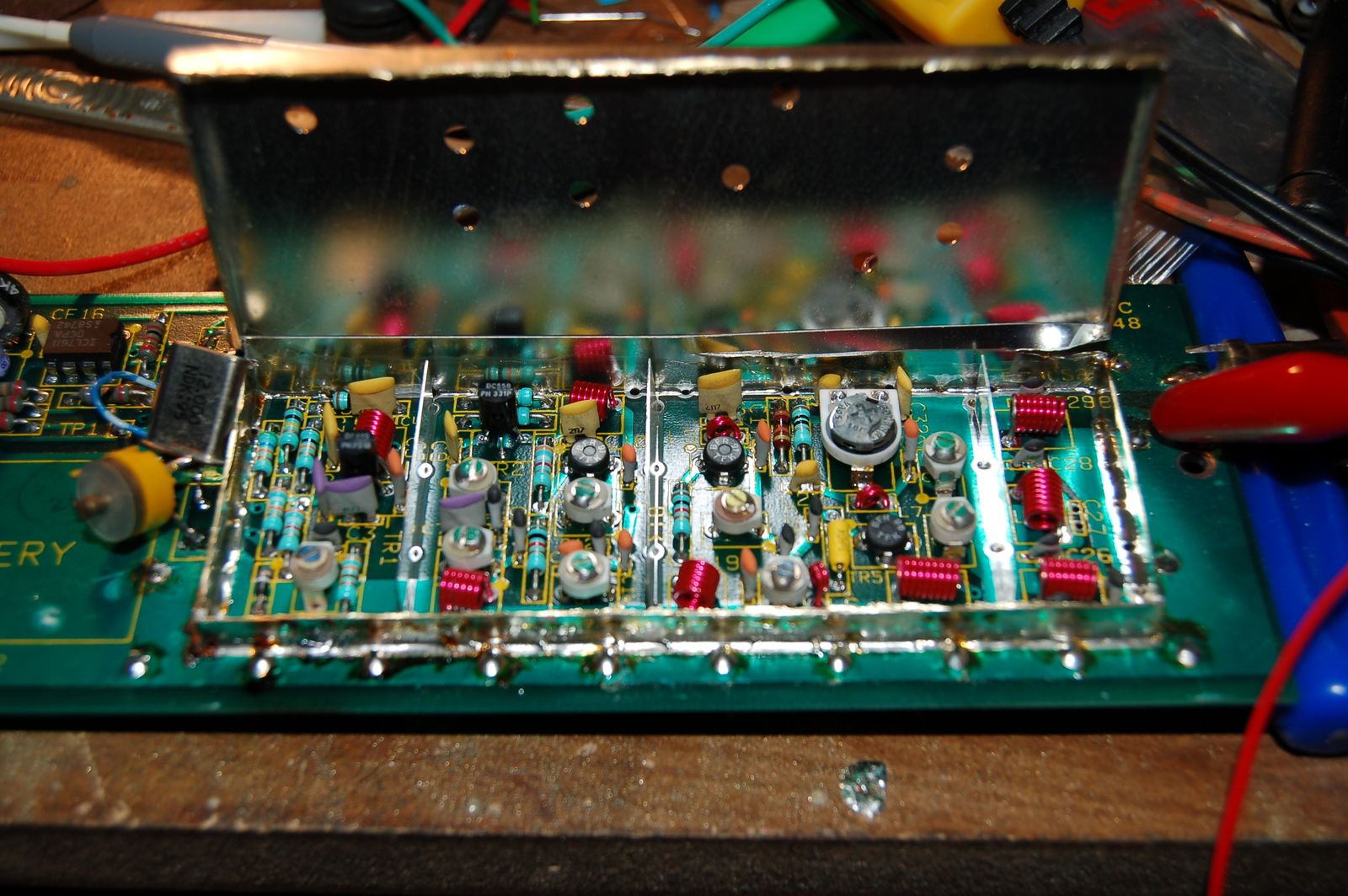
|
|---|
| Closeup of the RF section of the transmitter. |
The initial power output was rather low (<10 mW into 50 Ω), so I took advantage of the separate PA supply and increased the PA transistor voltage to 8 V; this brought the output up to a more respectable 100 mW at the expense of increased harmonics. Adjustment for minimum harmonics brought the signal at 144 MHz down to 75 mW with all but the 3rd harmonics at least 30 dB below this.
For initial tests, the carrier is just keyed on and off (5s on, 3s off) with a 555 timer on the control line.
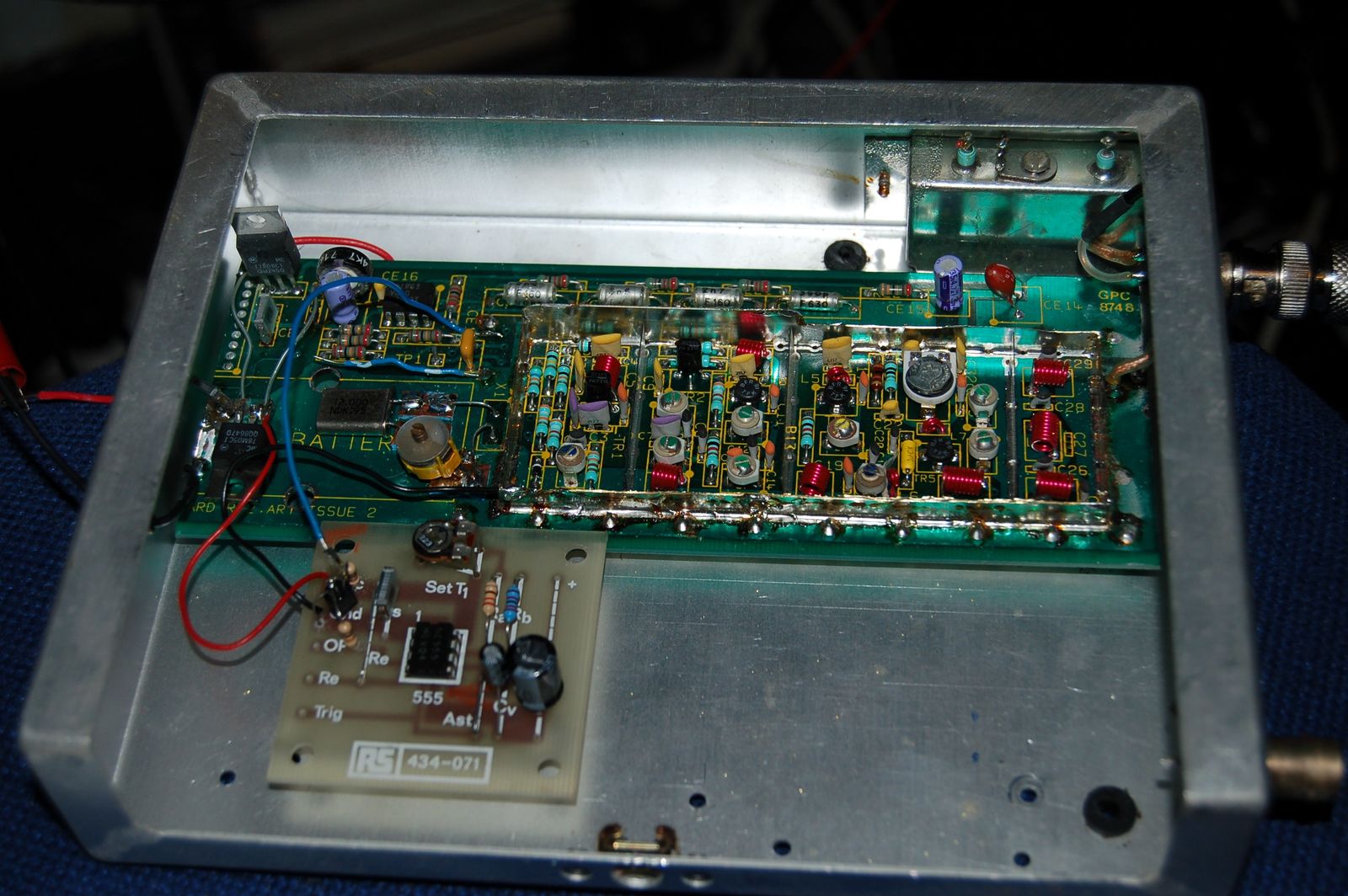
|
|---|
| The transmitter boxed up with a 555 timer controlling it. |
First Light
The first on-air signal report was from M1GEO at the astounding distance of 2.5 miles.
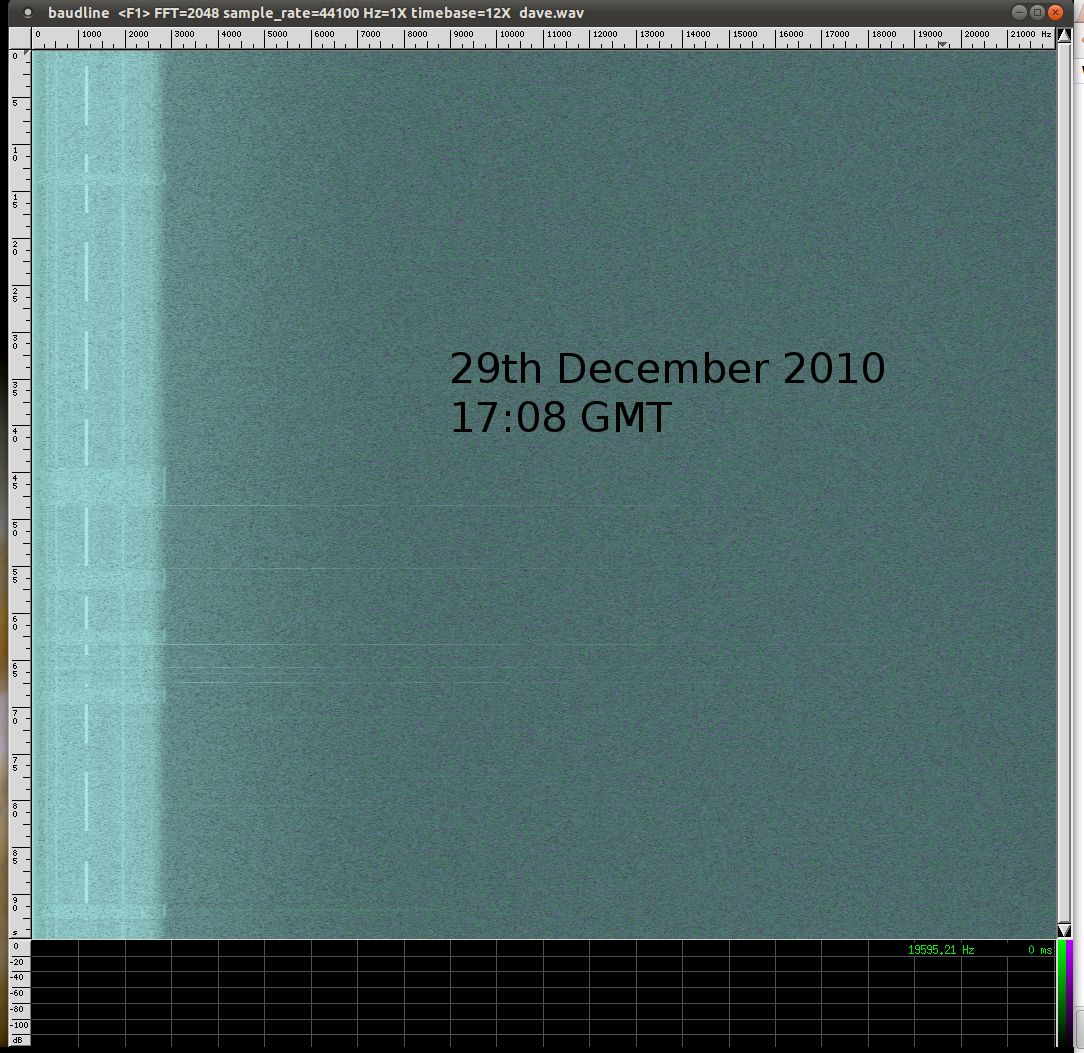
|
|---|
| The first copy was made by M1GEO at a distance of 2.5 miles. |
Later on, Colin G6AVK had a listen and captured my signal drifting a little.
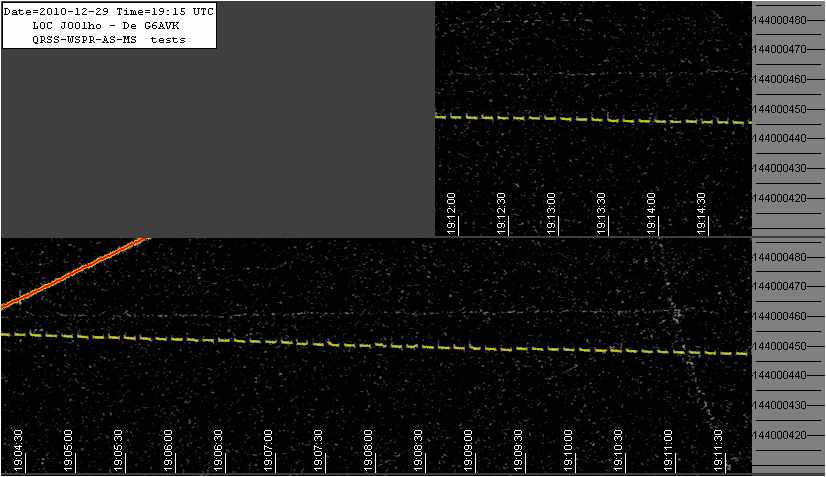
|
|---|
| First copy by G6AVK. |
Frequency stability modification
Although crystals are usually considered pretty stable frequency sources, there is a correlation of oscillation frequency with temperature, a few degrees C temperature change can easily translate into a hundred Hz or more of frequency shift; indeed, this is the basis for some thermometers. In this application, I’m multiplying up the crystal frequency, so I also multiply up any shifts due to heating or cooling of the crystal, 100 Hz shift at 12 MHz becomes 1.2 kHz at 144 MHz, which is way beyond the nominal 100Hz band claimed by QRSS. A means of keeping the crystal at a constant temperature is required.
A trawl around eBay brought up a heating clip for a crystal; this passes a small amount of current through a Positive Temp Coefficient Thermistor, causing self-heating and a positive resistance change that limits the current through the PTC, the result is a pretty stable temperature for a given voltage across the PTC. At 12 Volts, the heater draws approx 75 mA and settles down to about 65 degrees C.
With the heater fitted, the frequency drifts upwards quite dramatically for about 60 seconds until the heater settles down, then the frequency stability is +/- 2Hz with the board sitting in the open on the bench.
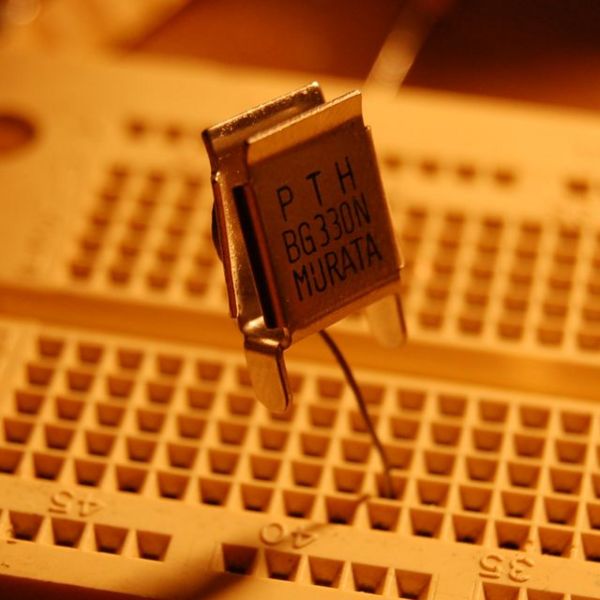
|
|---|
| Murata BG330N Xtal heater. |
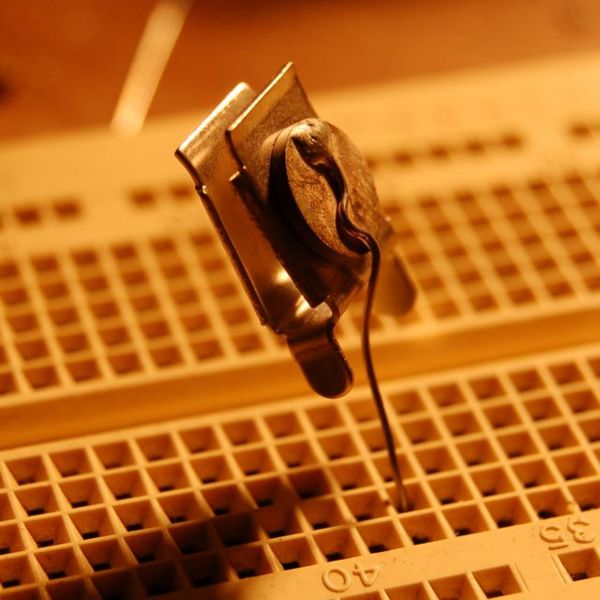
|
|---|
| Murata BG330N Xtal heater, showing PTC disc. |
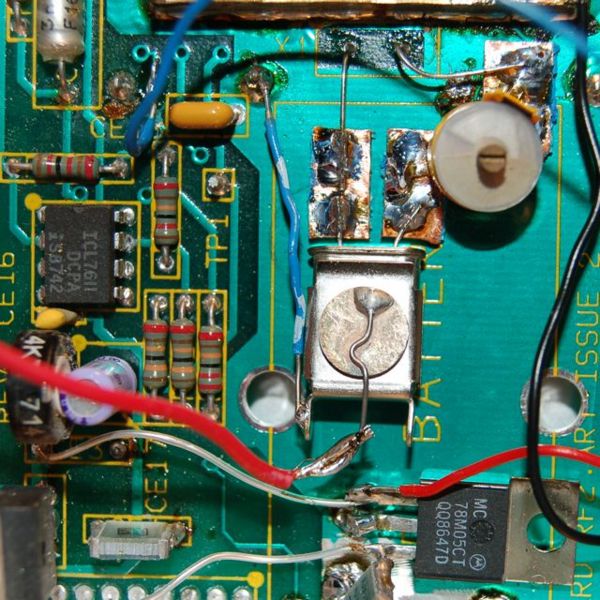
|
|---|
| The heater clip is fitted to the crystal in the transmitter and wired into the supply voltage. |
A new controller
In the south east of England there are lots of chirpy signals and carriers of unidentified nature in the lower portion of the 2m band, this makes conclusively spotting the on-off keyed carrier generated by the 555 timer circuit quite hard. To enable easier identification and to comply with license regulations, my new controller now sends my call-sign, G7UVW in QRSS3,6, & 10 modes and also periodically sends “G7UVW VHF QRSS MEPT” in 12 WPM Morse code. A single 7-segment LED module provides visual indication of them current transmission mode.
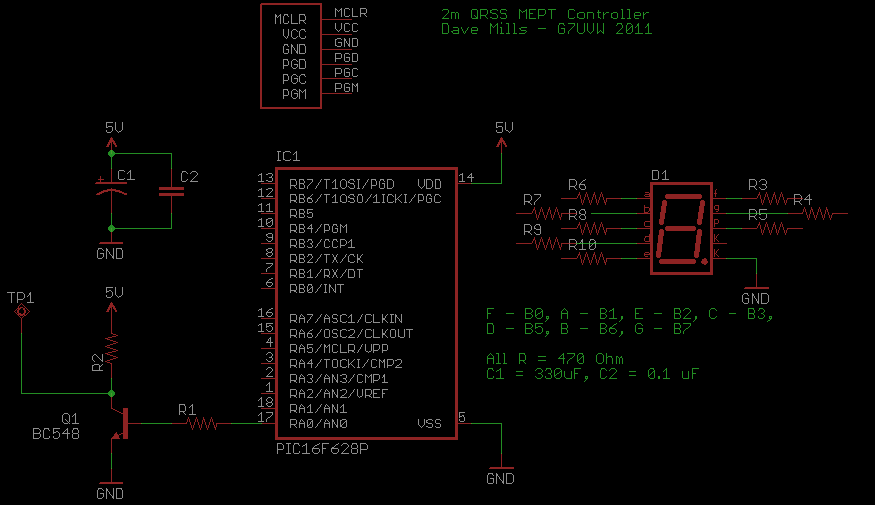
|
|---|
| QRSS Controller schematic. |
The controller was prototyped on two small pieces of veroboard and works well enough that I’ll probably not bother designing a PCB for it.
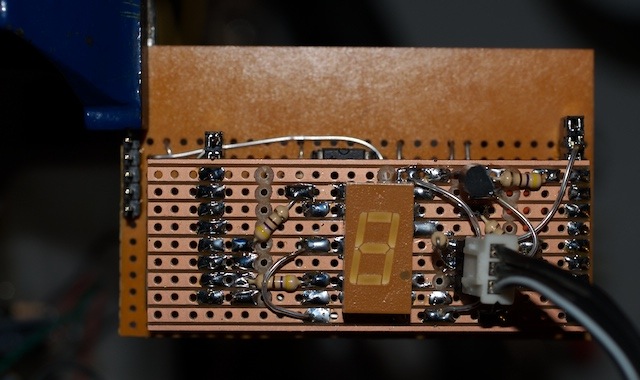
|
|---|
| QRSS Controller built on some veroboard offcuts. The Microcontroller is on the lower board. |
The source code for the controller can be found here. It’s a bit of a mess due in part to CCS C’s “interesting” take on the C language and me rushing it to get something working.
